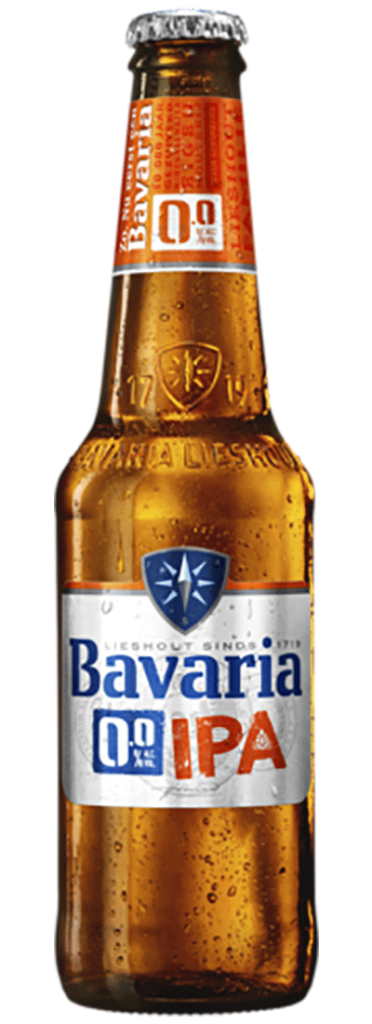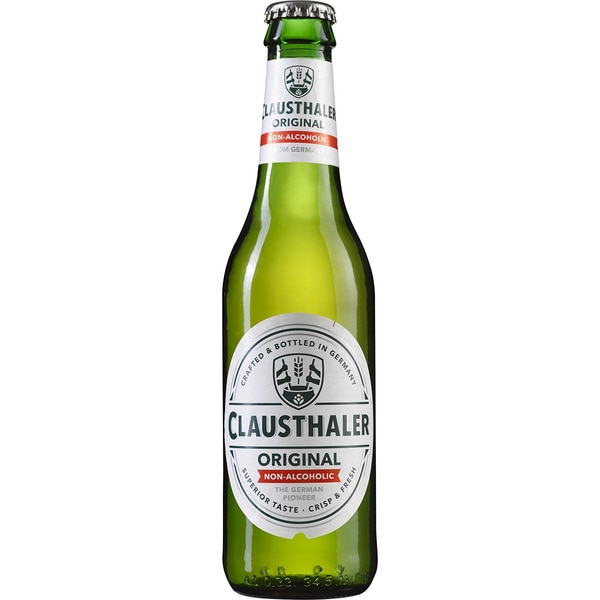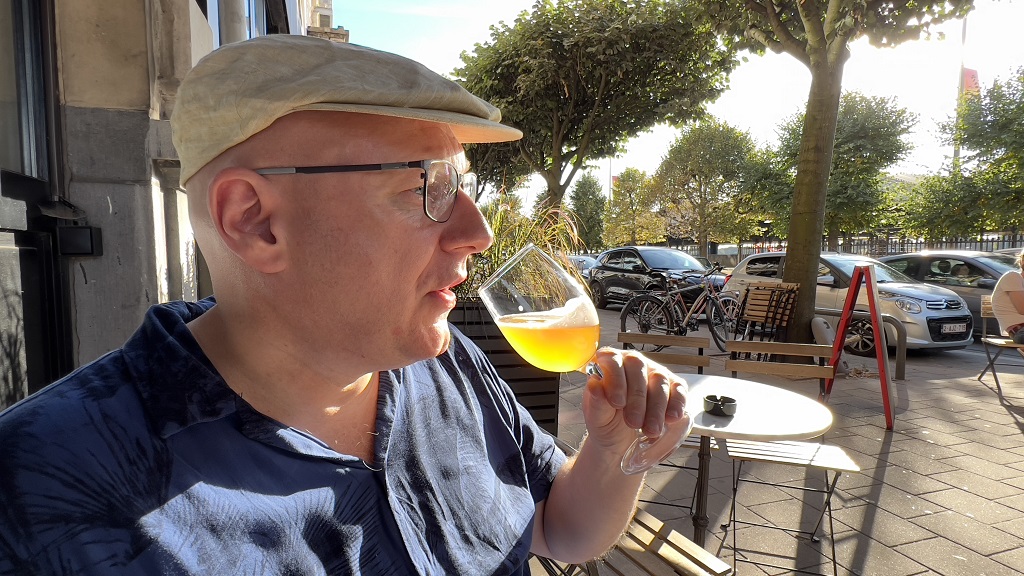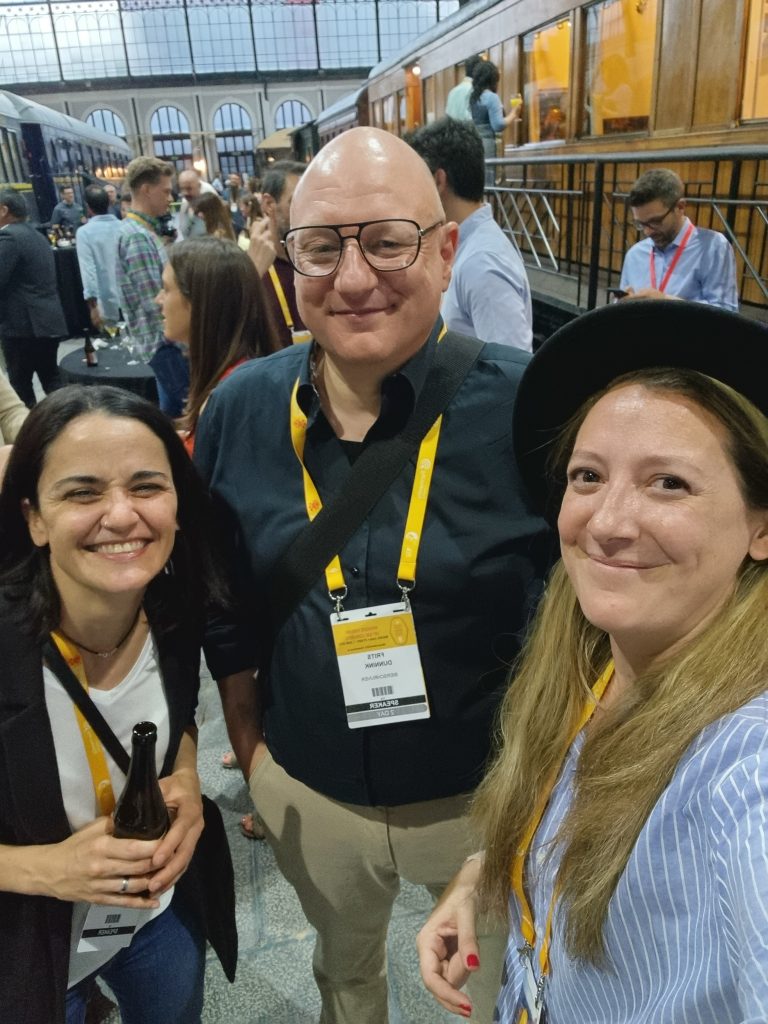
Interview with Frits Dunnink, beer sommelier and writer who gives us an important insight into the world of non-alcoholic beers.
Here we share the interview we did with him from Lúpulo Digital. If you are thinking of opening a market in this world of low-alcoholic or non-alcoholic beers, this content will be very interesting for you.
Read the interview here translated into spanish.
What motivated you to investigate non-alcoholic beers?
Quite frankly, when I first was asked questions about non alcoholic beer and how it is made, I still was in the “I don’t know and I don’t care” state of mind. But back in the days, a freshly baked beer sommelier I was under the notion, that to have adequate answers to questions about non-alcoholic beer was something to be required to my position. It was Dry January and I decided it was a good idea to make some inquiries in order to write an introduction to NA beer to publish on my blog. That was January 2020. In the process of writing that article I discovered contradictions that intrigued me from the very start. At one hand I discovered the challenge brewers face, to create something beer amateurs recognize and accept as something they would like to drink. Not being able to use their master ingredient to make good beer: the taste, flavour and character enhancing alcohol. Like one brewer I interviewed, describes a ‘Fencing with one hand bound behind your back’. And at the other end the resistance beer without alcohol provokes with beer drinkers. Recapitulated in quotes like: “Beer without alcohol? I only drink real beer!” or ‘Beer without alcohol? I’d rather drink water!” And perhaps the worst, most cynical reaction: “Alcohol free beer is like having sex with your sister: you just know it is wrong!”
When I got into the history of non-alcoholic beer, I stumbled across stories that would not be out of place in scenarios for Hollywood-movies: telling about big dreams, even bigger failures and despite many setbacks game changing success.
Of course I also started to taste non-alcoholic beers, trying to be a guide for my readers. I discovered heart sinking experiences, nourishing all those who shared the opinion of preferring water instead of having to drink beer without alcohol. But on my quest for quality I also found examples of non- alcoholic beers that are surprisingly good and even interesting to drink. And the tended to outnumber the bad ones by far. My main conclusions of this investigation are that beer with and without alcohol can perfectly coexist. Non-alcoholic beer is not meant to replace beer with alcohol. As a lover of beer, instead I was introduced to a vast universe of colours, aromas and tastes in addition to the world of beers I already had get to know and fallen in love with. There are different occasions for choosing from the one world or the other. In close connection to this I made a perhaps even more important discovery. Before my investigation of the topos of non-alcoholic beer, in my perception there was something patronizing about it. Something deriving from my strong sense of autonomy: I’m in charge of what I’m drinking. This shifted towards the awareness that non-alcoholic beer rather enhances my choice and freedom. Non-alcoholic beer doesn’t take anything away, but instead gives me a wider choice. More opportunity for taste and pleasure…
Non-alcoholic beer is not meant to replace beer with alcohol.
Frits Dunnink
In what style did this movement begin? Which or which are the most common worldwide? Anything very particular that you have tried?
It would be interesting to investigate the development of the first non- alcoholic ale. Brewers have been searching for the ‘Holy Grail’ for more than 111 years: beer of which one can drink as much as possible. The first efforts of breweries in The Netherlands date back from 1917/1918, because of huge lack of malts to brew with due to the situation created by WO I. Over a long time, brewers worked on non-alcoholic versions of lager beer. Frontrunners were AUBI in Eastern Germany (GDR) and Klausthaler in West- Germany. By the end of de 1970’s Dutch brewers started to develop non- alcoholic beer derived from lager. This was mainly because lager was the dominant style back in the days. One of the main technologies was to brew beer in a way that yeast would not create alcohol aside flavours that could generally be recognized as ‘beery’: the so called ‘reactor technology’ patented by what today is known as Royal Swinkels Family Brewers. In the course of the 1980’s technology was developed to remove alcohol from beer by vacuum distillation, but that method was quite rough and did a lot of damage to delicate beer.
Klausthaler non-alcoholic beer is still on the market, being produced more or less the same way as forty years ago. In the Netherlands you can buy Bavaria IPA 0.0 that is still made with the ‘reactor technology’ from the 1970’s, in basically every supermarket.


What process is mostly chosen to make non-alcoholic beer?
In present time there are two main methods of making non-alcoholic beers: either physical of biological.
The physical method enhances a variety of technological ways of removing alcohol from beer: dealcoholization. One example is apart from vacuum distillation, reverse osmosis. This approach by applying principals form physics calls for technically complex installations and therefor is really expensive. For this reason the physical method is suitable for breweries with deep pockets: Big Beer. It provides possibilities to produce beers that are truly 0.0%.
The biological method is about fermenting beer with yeast varieties that produce very little alcohol when converting sugars into alcohols and flavour. These yeast varieties derive from a by-product of the wine industry. Working with them enables brewers to create beer with an alcohol content of 0,3% – 0,5%. Any amateur brewer can make an non-alcoholic beer this way, provided she works by meticulous standards of hygiene during the proceedings. In working practice this turns out to be the bottle neck for smaller brewers to bring non-alcoholic beer to the market: to turn it into a stable product that is fit to be marketed.
In addition to the absence of alcohol, what other differences at the organoleptic level do you find in the result? Given that alcohol, it also brings some complexity and sensory depth to certain styles.In your opinion, of the styles that are made, which is the one that best adapts to the process of removing alcohol?

Through the history of the development of non-alcoholic beers the main challenge for brewers was to create produce free from off flavours. Old-school 0.0 lagerbeer would often be accompanied by fatty malt-like flavours, with reminiscence of animal feed. In more modern times brewers would try to build back flavour after extracting alcohol, either by the use of loads of sugar or isomerized hops. The latter creates a persistent, metal like, filming sensation to the mouth that would really be unpleasant. Beers with off flavours like this are still on the market, mostly in the lower price range.
Among big breweries there has developed some kind of ‘arms race’ to produce better and better 0.0 lager like beers. Flavour intensity still is a challenge for brewers of non-alcoholic beers in the present time. At best, the outcome can turn out twofold. Either they create a beverage that is completely free of off-flavours, perfectly good to drink, but with low flavour intensity. Enjoying them is like listening to a recording of a symphony orchestra with the speaker volume turned to a low level. Or they apply beer styles that are very well accommodated to non-alcoholic versions. The ‘Golden Boy’ of non-alcoholic beer styles is IPA. But I also tasted magnificent non-alcoholic milk stouts, fruited sours, English brown ales or Weizen beers. The most difficult beer styles for dealcoholization are the classical Belgian styles, where yeast has a dominant effect on organoleptics.
But more and more people, ordinary consumers and connoisseurs alike, are discovering non-alcoholic beer as an alternative
Frits Dunnink
At a global level, at what point do you think the non-alcoholic beer market is? Is there growth potential?
Non-alcoholic beer is becoming mainstream. Ordinary consumers are more open towards it than ‘hard core’ beergeeks. Nonetheless, on many beer festivals in The Netherlands you can find a corner where non-alcoholic beers are on draught. And they raise demand. Of course, with their baroque complexity and voluptuous alcohol levels beer styles like grand cru, quadruple, barley wine, Russian imperial stouts and the likes (possibly barrel aged) are like the Louboutins in a lady’s wardrobe.
But more and more people, ordinary consumers and connoisseurs alike, are discovering non-alcoholic beer as an alternative: like fashionable, yet sporty, easy and comfortable sneakers with a youthful and because of that sexy edge. It’s not something anymore that makes you feel awkward being seen wearing them. Doing so helps you make a statement: of being a mindful and health conscious, responsible and modern person.

Non-alcoholic beer didn’t come to replace beer with alcohol. Many beer enthusiasts will turn to switching between both options. Putting their alcohol intake on hold as it pleases them, but indulging in sumptuous alcoholic beer when there’s something to celebrate. Interestingly, for many brewers turning to producing non-alcoholic beer is a huge paradigm shift. Often provoked by fans and consumers, by their repeatedly expressed demand for non-alcoholic.
You already have a lot of experience in this area. What advice would you like to give to brewers who are starting to brew without?
For independent brewers commercially interesting opportunity is to be found in beer of any style. Yet they shouldn’t restrain themselves to IPA and the likes. Also in the flavour registers of malt and even fruits and botanicals splendid ways to create aroma, taste and character can be found. And I tasted very interesting non-alcoholic takes on pilsener by small independent brewers. Look towards the lesser alcoholic beers in your portfolio, they are generally more suitable to turn into a non-alcoholic version than your heavy duty best sellers. It takes a smaller step to follow for your regulars, to embrace the non-alcoholic version of a beer they are already friendly with. One very successful mainstream 0.0 beer is the non-alcoholic Guinness, which is from itself is a tasteful yet light beer. Very much not hop forward, a perfect showcase for the opportunity brewers can find in the malt bill to create flavour and character in non-alcoholic beer.
In need of inspiration? Have a chat with Cristina Saéz for the practical aspects of creating non-alcoholic beer. She knows her way in the world of non-alcoholic production facilities in your neck of the woods.
And finally: don’t let yourself get intimidated by those beerlovers who loudly preach that beer should contain a lot of alcohol. Otherwise it is not any good at all. They are attached to their ‘stuff’ and a boisterous, but declining minority. The future belongs to the mindful drinkers.

